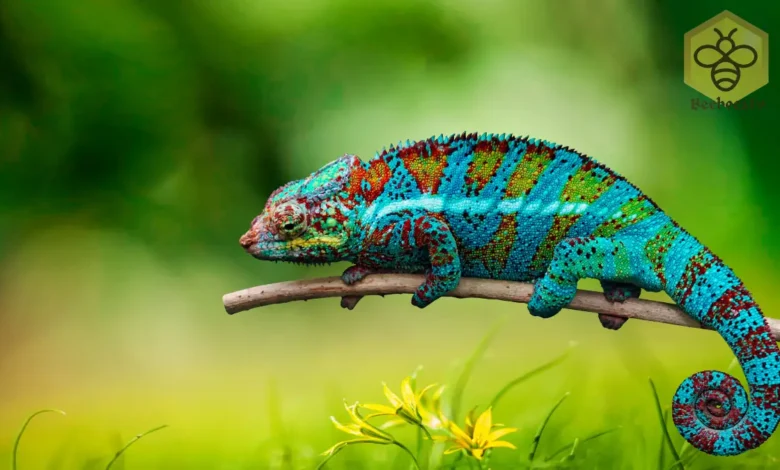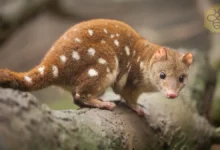Chameleons Secrets: Master of Camouflage

Chameleon Secrets: Camouflage Champions
Chameleon
Chameleons are one of the most fascinating reptiles on the planet, known for their incredible ability to change colors, move their eyes independently, and capture prey with their long, sticky tongues. With over 200 species found across various regions, chameleons exhibit a diverse range of physical traits and behaviors.
Scientific Name
The scientific name for the chameleon varies depending on the species. The most common genus is Chamaeleo, which includes species such as the common chameleon (Chamaeleo chamaeleon) and the veiled chameleon (Chamaeleo calyptratus).
Common Name
These reptiles are commonly known as chameleons, a name derived from the Latin word “chamaeleon,” which means “ground lion.”
Scientific Classification
| Kingdom | Animalia |
| Phylum | Chordata |
| Class | Reptilia |
| Order | Squamata |
| Family | Chamaeleonidae |
| Genus | Multiple genera, including Chamaeleo, Furcifer, and Bradypodion |
| Species | Over 200 species |
Types of Chameleons
Chameleons are divided into several genera, with more than 200 species. Some of the most popular types include:
- Veiled Chameleon (Chamaeleo calyptratus): Known for its casque-like crest, found in Yemen and Saudi Arabia.
- Panther Chameleon (Furcifer pardalis): Known for its vibrant colors and native to Madagascar.
- Jackson’s Chameleon (Trioceros jacksonii): Distinguished by its three horn-like structures on its head, found in East Africa.
- Pygmy Chameleon (Rhampholeon spp.): Smaller in size and commonly found in forest floors across East Africa.
Habitat
Chameleons inhabit a variety of environments, including:
- Tropical and Subtropical Forests: Many species are arboreal and live in the forest canopy.
- Savannas and Grasslands: Some species, like the veiled chameleon, can also be found in drier environments.
- Deserts and Semi-Deserts: Certain species have adapted to live in arid regions with sparse vegetation.
- Mountainous Regions: High-altitude chameleons, such as Jackson’s chameleon, are found in the forests and hills of East Africa.
Physical Characteristics
Chameleons possess several unique physical traits that set them apart from other reptiles:
- Color-Changing Skin: The ability to change color is due to special pigment cells in the skin called chromatophores. This adaptation helps with camouflage, social signaling, and temperature regulation.
- Eyes: Chameleons have large, protruding eyes that can move independently, allowing them to have a 360-degree field of vision. This adaptation helps them spot prey and predators from a distance.
- Tongue: They have long, sticky tongues that can extend up to twice their body length to catch insects. The tongue is launched at high speed, capturing prey in a fraction of a second.
- Feet and Tail: They have zygodactylous feet, with two toes pointing forward and two pointing backward, providing a firm grip on branches. Many species also have prehensile tails for balance and stability.
Diet
Chameleons are primarily insectivorous, feeding on a diet that consists of:
- Insects: Such as crickets, grasshoppers, and flies.
- Other Small Invertebrates: Including caterpillars, worms, and spiders.
- Occasionally Small Vertebrates: Larger chameleons may eat small birds, lizards, or other reptiles.
Their diet is supplemented by licking moisture from leaves or drinking water droplets, as hydration is crucial for their health.

Predators and Threats
Chameleons face a variety of natural predators and human-induced threats:
- Birds of Prey: Hawks and other birds are some of the primary predators of chameleon.
- Snakes: Certain species of snakes can climb trees and prey on chameleons.
- Mammals: Small mammals like monkeys may occasionally prey on these reptiles.
- Habitat Loss: Deforestation and land development pose significant threats, especially in Madagascar, where many species are endemic.
- Pet Trade: Some chameleons are captured for the exotic pet trade, impacting wild populations.
- Climate Change: Shifting temperatures and weather patterns may alter habitats and threaten species survival.
Reproduction, Babies, and Lifespan
Chameleons exhibit diverse reproductive strategies across species.
- Egg-Laying (Oviparous): Most chameleons lay eggs, which are buried in soil or leaf litter. The incubation period can range from a few months to over a year, depending on the species.
- Live-Bearing (Ovoviviparous): Some species, like Jackson’s chameleon, give birth to live young, with the female carrying the eggs internally until they hatch.
- Lifespan: Chameleons’ lifespans vary widely. Small species may live only 1-3 years, while larger species can live up to 10 years in captivity.
Population
The population status of chameleons differs from species to species:
- Endangered Species: Some species, such as certain Malagasy chameleons, are endangered due to habitat loss and the pet trade.
- Stable Populations: Other species, like the veiled chameleon, have stable populations, especially where they have been introduced outside their native range.
- Invasive Species: Jackson’s chameleon, introduced in Hawaii, has become an invasive species, impacting local ecosystems.
Behavior and Lifestyle
Chameleons exhibit intriguing behaviors and lifestyles that help them survive in the wild:
- Solitary Nature: They are generally solitary and territorial, interacting mainly during mating.
- Territorial Displays: They use color changes and body posture to communicate dominance or submission, especially during territorial disputes or courtship.
- Diurnal Activity: Most chameleons are active during the day, basking in the sun and hunting for food. At night, they rest on branches or other high perches to avoid ground predators.

Ecological Role
Chameleons play a crucial role in their ecosystems by:
- Controlling Insect Populations: As insectivores, chameleons help manage insect populations, which can be beneficial for plant life.
- Prey for Larger Animals: They form part of the food chain, serving as prey for birds, snakes, and mammals.
FAQs About Chameleons
- Why do chameleons change color?
They change color for camouflage, social signaling, and temperature regulation. The process is controlled by the expansion and contraction of pigment cells. - Are chameleons good pets?
Yes, they can be kept as pets, but they require specific care, including proper temperature, humidity, and a varied diet. They are best suited for experienced reptile keepers. - How long do chameleons live?
Chameleons’ lifespans vary, with some living only 1-3 years and others reaching up to 10 years in captivity. - Can chameleons see in color?
Yes, they have excellent vision and can see a broad range of colors, including ultraviolet light. - Do all chameleons have prehensile tails?
Not all chameleons have prehensile tails. While many species use their tails for balance and gripping branches, some species, like pygmy chameleons, have less developed tails.
Conclusion
Chameleons are truly remarkable reptiles, with a combination of unique adaptations that make them well-suited for their diverse habitats. Their ability to change color, independently moving eyes, and specialized diet highlight the complexity and marvel of nature’s design. However, chameleons face significant threats from habitat destruction, climate change, and the pet trade, emphasizing the need for conservation efforts. Understanding and protecting these captivating creatures will help maintain the balance of ecosystems where they play vital roles, ensuring that chameleons continue to mesmerize the world with their remarkable adaptations.


